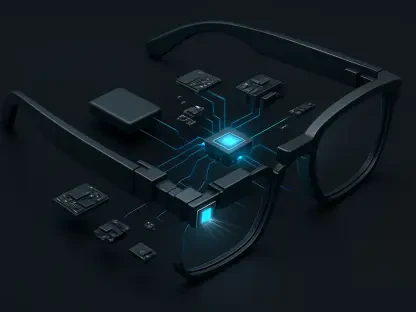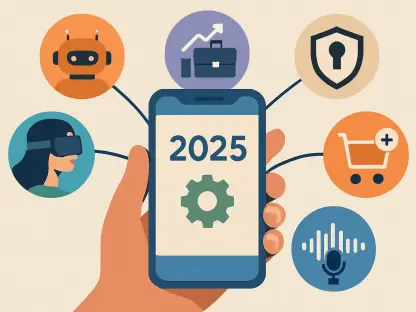The cellular Internet of Things (IoT) market is poised for monumental growth in the coming years. Boosted by the rapid adoption of 5G technology and increasing application in various sectors, the market is projected to exceed $26 billion in revenues by 2030. This growth reflects significant advancements in connectivity, technological innovations, and the rising demand for real-time data analytics across industries.
Growth of IoT Connections and Revenues
Surge in IoT Connections
The global cellular IoT connections experienced a 24% spike in 2023, reaching an impressive 3.3 billion. This surge is a testament to the growing reliance on IoT solutions for improving efficiency and productivity across diverse sectors. The upward trend shows no signs of slowing down, with projections indicating that connections will surpass 6.2 billion by 2030. This exponential growth underscores the pivotal role of cellular IoT in supporting the infrastructure of smart cities, industries, and homes.
With the increasing integration of IoT technologies across various sectors, the demand for reliable connectivity continues to grow. Cellular IoT connections are becoming essential in sectors such as healthcare, manufacturing, and agriculture, enabling real-time monitoring and data exchange. The anticipated growth in connections highlights the strategic importance of IoT frameworks in achieving operational excellence and ensuring seamless communication within and between industries. The scope of applications for IoT is expanding, driven by its ability to streamline processes, reduce costs, and optimize resource utilization.
Revenue Expansion
Revenues from cellular IoT connections also saw a significant boost, with a 17% year-over-year increase amounting to $13.7 billion in 2023. This financial growth is fueled by the expanding use cases of IoT solutions, ranging from connected vehicles to smart meters. By 2030, the market’s revenue is expected to more than double, exceeding $26 billion. This forecasted growth highlights the lucrative opportunities within the IoT sector and the ongoing investments in IoT technology and infrastructure.
The continuous expansion of IoT applications across various industries is a key driver of this revenue growth. Companies are increasingly recognizing the value of IoT in enhancing efficiency, reducing operational costs, and generating new revenue streams. Investments in IoT technology are yielding significant returns, further encouraging businesses to adopt IoT solutions. As IoT technologies evolve and become more integrated into business processes, their role in driving revenue growth is expected to become even more pronounced. The future of cellular IoT revenue expansion is promising, with robust growth anticipated across multiple sectors.
China’s Market Dominance
Leading in Connections
China emerged as a dominant force in the global cellular IoT market, holding nearly 70% of the total connections in 2023, equating to over 2.3 billion connections. This overwhelming majority is primarily due to China’s aggressive digitalization policies and significant investments in IoT infrastructure. The country’s focus on developing smart cities and implementing IoT in various public services has further solidified its leading position in the market.
China’s strategic initiatives to promote IoT adoption are evident in its rapid deployment of IoT-enabled solutions across various sectors. The government has played a pivotal role in driving digital transformation through supportive policies and substantial investments in IoT infrastructure. The development of smart cities has been at the forefront of China’s IoT strategy, with initiatives aimed at enhancing urban management, transportation, and citizen services. This large-scale adoption of IoT solutions has positioned China as a global leader in IoT connections.
Revenue Paradox
Despite having the majority of global connections, China’s share of IoT revenue stands at 36%, which is relatively low compared to its connection dominance. This disparity can be attributed to the region’s low average revenue per user (ARPU). However, as 5G technology becomes more prevalent, it’s expected that ARPUs will stabilize and potentially increase, balancing the revenue landscape more evenly and enhancing overall market profitability.
The lower ARPU in China can be linked to highly competitive market conditions and pricing strategies aimed at maximizing IoT adoption rates. Nonetheless, the introduction of 5G is likely to shift this dynamic by enabling high-value IoT applications that command higher revenues. The potential for increased ARPUs with 5G adoption may lead to a more balanced revenue distribution, reflecting the true scale of China’s market dominance. As the Chinese IoT market continues to evolve, the revenue paradox presents an intriguing area of growth and opportunity for future IoT deployments.
Key Sectors Driving Growth
Connected Cars
The automotive sector is a primary driver of IoT growth, particularly through connected cars. These vehicles, equipped with IoT technology, offer enhanced automation, safety, and efficiency features. By 2030, connected cars are anticipated to represent a substantial portion of the IoT market, reflecting the shift towards autonomous and smart vehicular systems. This sector’s growth is indicative of the broader trend towards integrating IoT technologies in everyday commodities.
Connected cars are revolutionizing the automotive industry by providing features such as real-time navigation, remote diagnostics, and predictive maintenance. These advancements are improving driver safety, reducing operational costs, and enhancing the overall driving experience. The increasing demand for connected cars is driving automakers to invest in IoT technologies, leading to continued innovation and adoption. As automotive IoT solutions become more advanced, the sector’s growth trajectory is expected to accelerate, contributing significantly to the overall expansion of the IoT market.
Smart Meters
Smart meters are another crucial sector propelling the IoT market. These devices play a vital role in energy management by providing real-time monitoring and data analytics. The demand for smart meters is growing as utility companies and consumers seek efficient energy usage solutions. By optimizing energy consumption and reducing wastage, smart meters are expected to be a dominant force in the IoT market by the end of the decade.
Smart meters enable real-time monitoring of energy usage, helping both consumers and utility companies optimize consumption patterns. By providing detailed insights into energy usage, smart meters facilitate better decision-making and contribute to sustainability goals. The adoption of smart meters is driven by the need for efficient energy management solutions amid rising energy costs and environmental concerns. As smart meter technology continues to evolve, its impact on the IoT market will expand, further driving the growth of this crucial sector.
Smart Retail
The retail sector is increasingly adopting IoT solutions to enhance customer experiences through data-driven insights. Smart shelves, automated checkouts, and personalized marketing are some IoT applications revolutionizing retail. As the demand for seamless shopping experiences grows, smart retail is set to capture a significant IoT market share, improving operational efficiency and customer satisfaction.
IoT technologies are transforming the retail landscape by enabling more personalized and efficient shopping experiences. Retailers are leveraging IoT solutions to optimize inventory management, streamline checkout processes, and deliver targeted marketing campaigns. The integration of IoT in retail is driving operational efficiencies and enhancing customer engagement, leading to increased sales and customer loyalty. As the retail sector continues to adopt IoT solutions, its market share within the IoT landscape is expected to grow, reflecting the ongoing digital transformation in retail.
Technological Shifts Towards 5G
Role of 5G in IoT
The advent of 5G technology is a game-changer for the cellular IoT market. With its high-speed, low-latency capabilities, 5G is expected to cater to the growing need for real-time data processing and connectivity. By 2030, it’s projected that nearly 50% of global IoT connectivity revenues will be generated from 5G-based connections. This shift toward 5G underscores its essential role in supporting high-demand applications such as autonomous vehicles and industrial automation.
5G technology promises to revolutionize the IoT landscape by providing faster and more reliable connectivity. The reduced latency and increased bandwidth of 5G networks enable real-time data processing, which is critical for applications requiring instantaneous communication and control. The enhanced capabilities of 5G will support the growth of IoT in sectors such as healthcare, manufacturing, and transportation. As 5G networks continue to expand, their impact on the IoT market will become increasingly significant, driving innovation and growth across various industries.
Future Prospects of 5G
The adoption of 5G is set to transform various industries by enabling more sophisticated and reliable IoT applications. In the industrial sector, for instance, 5G connectivity will facilitate advanced automation and remote operations, enhancing productivity and safety. The healthcare sector will also benefit from 5G’s capabilities, supporting remote diagnostics and real-time patient monitoring. The widespread implementation of 5G will drive innovation and expansion in the IoT market, solidifying its future prospects.
The future prospects of 5G in the IoT market are promising, with numerous industries poised to benefit from its capabilities. Enhanced connectivity will enable the development of new IoT applications and services, driving efficiency and innovation in sectors such as agriculture, logistics, and entertainment. The continuous evolution of 5G technology will open up new possibilities for IoT deployment, creating opportunities for businesses to leverage advanced connectivity solutions. As 5G networks become more prevalent, their transformative impact on the IoT market will be profound, shaping the future of connectivity and automation.
Emerging Regions and Digital Transformation
Rising Importance of Emerging Regions
The cellular Internet of Things (IoT) market is set to experience unprecedented growth over the next few years. This surge is being driven by the widespread adoption of 5G technology and the increasing use of IoT applications across multiple sectors, including healthcare, manufacturing, and transportation. With these advancements, the market is expected to surpass $26 billion in revenue by 2030. This impressive growth is a testament to significant improvements in connectivity and ongoing technological innovations. Furthermore, the rising demand for real-time data analytics is fueling interest in IoT solutions, leading companies to invest heavily in this area. The ability to gather and analyze real-time data is becoming essential for businesses aiming to maintain a competitive edge, optimize operations, and deliver enhanced customer experiences. As more industries recognize the benefits of IoT, the integration of these technologies is likely to become even more widespread, making IoT an indispensable part of the global digital landscape.









